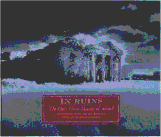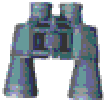




Before you go hunting for a ruin you will find the following useful:
Gather as much information about the property itself as you can find. The name of a ruin and the closest village is essential to begin with. The situation and size of the ruin will then dictate how easy it is to find. Almost without exception, a great house was built in an imposing position ensuring great views of either the attacking foe (in the case of a castle) or the beauty of the surrounding views (in the case of a country house). This is a great benefit when searching for ruins in the countryside but a disability when looking for coastal properties – see section below on Coastal Ruins.
You will need a map, the smaller/larger the scale the better. If you have a 1:400,000 scale tourist type map covering huge areas you will be able to locate a fairly small village but your skills of ruin hunting will be put to greater test – enjoy the challenge! A 1:50,000 will give many more clues to the situation of buildings although you may have to investigate a few sites before finding the target of your hunt.
Binoculars are a useful accessory with which to scan countryside for evidence of a ruin.
Look out for clues. Whilst searching from the car, look out for tell-tale signs of old abandoned estates such as crumbling estate walls, a proliferation of well developed ornamental trees such as cedars, lodge houses (either still in use or abandoned) and, of course, gateways. Many of the larger houses had an imposing gateway or lodge house which is the first piece of evidence you come across when on the road.
Once you have found your ruin, a torch is a useful accessory. Should you be lucky enough to find a ruin which has floors intact, stairs, steps or any underground openings (cellars, tunnels etc) a torch is essential, even for peering in through a tiny opening through which a body could not pass.
Coastal Ruins
These need special mention as they are a lot more difficult to find than those situated in the countryside. This is because they face out to sea and are not always easily visible from the land side. If the geography of the coast allows, go to a point that juts furthest out to sea or allows the best view back onto the land. If the target of your hunt is not here, scan the coastline, preferably with binoculars, for signs of the ruin.